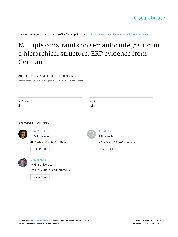摘要
A recent ERP study on Chinese demonstrated dissociable neural responses to semantic integration processes at different levels of syntactic hierarchy (Zhou et al., 2010). However, it is unclear whether such findings are restricted to a non-case marked language that relies heavily on word order and semantic information for the construction of sentence representation. This study aimed to further investigate, in a case-marked language, how semantic processes in a hierarchical structure take place during sentence reading. We used German sentences with the structure "subject noun + verb + article/determiner + adjective + object noun + prepositional phrase", in which the object noun was constrained either at the lower level by the adjective or at the higher level by the verb, and manipulated the semantic congruency between the adjective and the object noun and/or between the verb and the object noun. EEGs were recorded while participants read sentences and judged for their semantic acceptability. Compared with correct sentences, a biphasic pattern of an N400 effect followed by a late positivity effect was observed on the object noun for sentences with either lower- or higher-level mismatch or with double mismatches. Both the N400 effect and the late positivity (P600) effect were larger for the double mismatch condition than for either of the single mismatch conditions. These findings demonstrate cross-language mechanisms for processing multiple semantic constraints at different levels of syntactic hierarchy during sentence comprehension.
- 出版日期2011-9-2
- 单位北京大学
